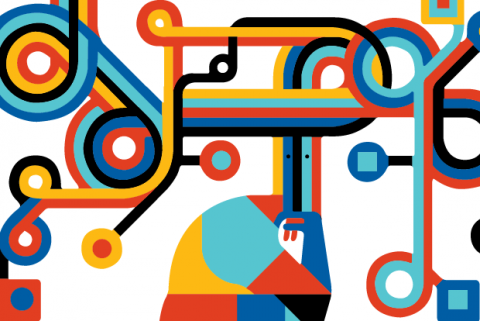An interview with Mike Martin, CIO of networking company, nfrastructure.

The Enterprisers Project (TEP): We've all heard a lot about IoT and how it's changing everything. What shape are those changes taking at nfrastructure?
Martin: At nfrastructure we design, build and manage large-scale network environments for customers across a variety of industries. The Internet of Things (IoT) is obviously causing the size and diversity of those networks to increase dramatically — we like to say that we now work in the 'Network of Everything'.
Having virtually everything on the network creates amazing new opportunities to connect people, things and data and truly transform how our customers are doing business. For example, we recently built a prototype shopping list app to highlight IoT capability and potential for one of our retail clients. The mobile app dynamically filters customer's shopping lists to match their current location in the store (using Bluetooth LE communication between the customer's smart phone and location beacons placed throughout the store). It's just one example of how IoT technology can directly improve the customer experience in a variety of industries. It's a very exciting time.
TEP: IoT often provides companies with a great deal of data they did not have before. Is that the case for nfrastructure?
Martin: Absolutely. The Internet of Things is much more than simply connecting devices — the true value often comes from the resulting data. Revisiting that shopping list app that I mentioned earlier, it not only improves the in-store experience for the customer, it also provides the retailer with the ability to capture new, more detailed data such as store traffic patterns, purchasing behavior, etc. This data is extremely valuable for both real-time operations and also deeper analytics.
Insights about the business are certainly the most valuable data that can be harvested from IoT solutions. However, we also carefully monitor the workloads and traffic patterns that IoT solutions introduce to an enterprise IT environment. This operational data helps us optimize the fundamental infrastructure to support the significant scale and volume challenges associated with IoT.
TEP: How is IoT changing IT's relationship with other employees at nfrastructure?
Martin: Any successful IoT project starts with great cross-functional collaboration across IT — networking, mobility, big data, cloud, app dev and security are all key solution components. To maximize that collaborative dynamic, we've adjusted our IT organization structure to align more naturally with an IoT architecture framework. Specifically, we are creating cross-functional teams that combine business leadership with technical expertise across the multiple layers of IoT solutions (application, infrastructure, operations, etc.). These teams minimize organizational barriers to innovation and create a more efficient and effective environment for developing creative and meaningful IoT solutions.
TEP: How is IoT changing nfrastructure's marketplace and its customers' capabilities and expectations?
Martin: IoT presents some imposing challenges — an incredible number of devices, a diverse and complex array of technologies, massive data volumes, wide reach (multiple locations), and of course, security. Our customers are experimenting with IoT technologies and creating some truly innovative solutions. However, they often struggle to rapidly and securely scale their pilot successes across the entire organization. They are looking to us for assistance in that regard, leveraging our people, processes and technologies to accelerate their large-scale deployments and expedite the resulting value.
TEP: Any advice you'd offer other CIOs as they prepare for the rapid growth of IoT?
Martin: Get started. Don't get stuck in the planning stage. Launch some pilot projects that seek to address a meaningful business problem or opportunity with IoT technologies. The hardware to connect things is fairly inexpensive and with the flexibility of cloud infrastructure, it is quite easy to minimize the cost of failed IoT projects. So experiment — find an amazing new solution or fail fast and try again. When you find a winner, take the time to ensure proper security (at all levels in communication, devices, data, etc.) then quickly deploy at scale to maximize value.
Read Debra Bulkely's article, 'Is the Internet of Things an opportunity for the CIO?"




